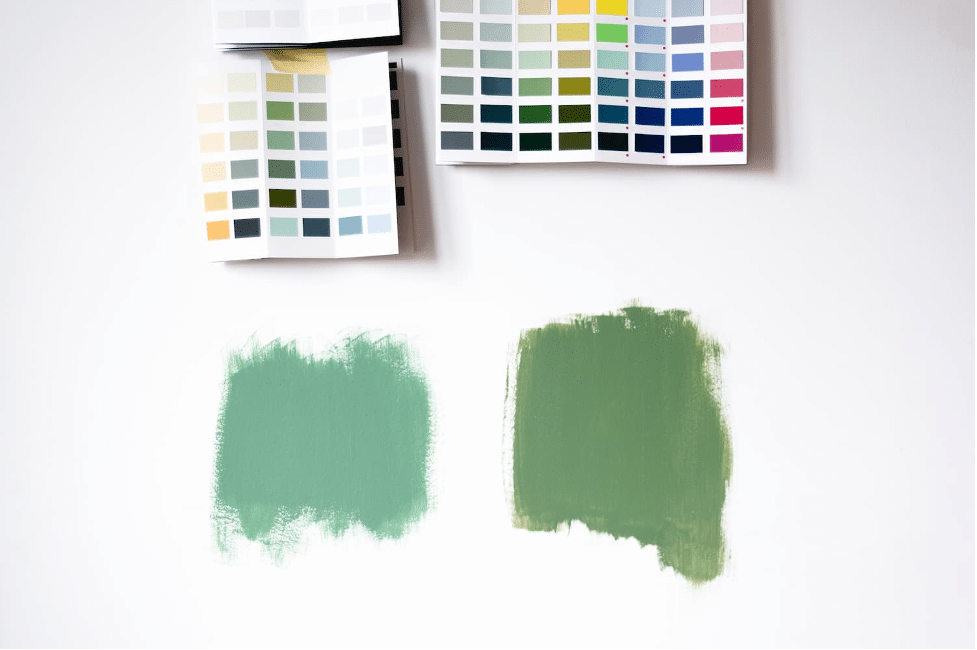Choosing the perfect color for any space in your house is more than just a matter of aesthetic preference; it’s a decision that can influence the mood, perception, and functionality of the room. This essay delves into practical considerations and strategies for selecting the ideal color palette, ensuring that your home not only looks beautiful but also reflects the desired atmosphere and meets your living needs.
Understanding Color Psychology
The journey to selecting the right color begins with an appreciation for color psychology. Different hues can evoke various emotions and feelings—blue can induce calmness, red can energize, and green can promote relaxation. It’s essential to consider what atmosphere you want to create in a room before deciding on its color. For instance, a bedroom might benefit from soothing blues or greens, while a home office could be more productive with invigorating shades like light yellow or soft gray.
Harmonizing Your Space with the Play of Sunlight and Shade
Natural light significantly influences how colors are viewed within a space. Rooms flooded with sunlight can embrace darker hues without seeming overwhelming, while areas lacking natural light usually benefit from lighter tones to create a brighter, more expansive feel. Evaluating the light dynamics in a room throughout the day can assist in selecting a color that preserves its desired impact regardless of the time.
What’s The Perfect Time for a New Palette?
Renovating your home presents a unique and exciting opportunity to reinvent your living spaces with the transformative power of paint. This period of change is the perfect time to reassess not just the function of each room but also its feel and atmosphere. It allows you to align your spaces more closely with your current tastes, lifestyle, and the mood you wish to cultivate. Painting during a renovation, such as a home remodel in San Jose, can be both a practical decision and a creative exploration, offering a cost-effective way to make a significant impact on your home’s overall aesthetic.
Integrating New with Old
Choosing colors in the context of a renovation allows for seamless integration of new additions or updates with existing elements, ensuring a cohesive look throughout your home. Moreover, this process can lead to more daring or thoughtful selections, as you’re already in the mindset of transformation and improvement. This is an opportunity to refresh, renew, and perhaps even surprise yourself with the vibrant potential that lies in a few cans of paint, turning your home into a reflection of your evolving personal style.
Coordinating with Furniture and Decor
A practical approach to selecting room colors involves considering the existing or planned furniture and decor. Choosing wall colors that complement your furnishings ensures a cohesive look and feel. For example, a room with rich wooden furniture may harmonize well with warm, earthy wall colors, creating a snug and inviting atmosphere.
The Power of Paint Samples
One of the most practical pieces of advice when choosing paint colors is to test them out first. Paint small sections of the wall with your chosen shades to see how they look under different lighting conditions throughout the day. This step can prevent dissatisfaction after the room has been fully painted, as colors can shift in appearance from how they look on a sample card.

The Impact of Room Size and Ceiling Height
Colors possess the ability to influence the perceived size and ceiling height of a room. Light hues can create a sense of spaciousness and airiness in a small area, while darker tones can infuse depth and coziness into a larger space. Moreover, applying a lighter color to the ceiling can visually enhance the room’s height, whereas a darker ceiling can evoke a more intimate ambiance.
Timeless Hues and Trendy Tones
While keeping up with color trends can be enticing, it’s vital to consider the longevity of your color choice. Trendy colors may not always align with your long-term satisfaction, potentially leading to the need for another makeover sooner than expected. Opting for classic hues can ensure your space remains stylish and appealing over time.
Accent Walls and Color Blocking
For those hesitant to commit to a full room of bold color, accent walls and color blocking offer a practical solution. These techniques allow you to introduce vibrant colors or interesting patterns without overwhelming the space, adding character and focal points to the room.
Finish and Texture
The selection of paint finish is pivotal in shaping both the aesthetics and practicality of a room. Matte and eggshell finishes are adept at masking wall imperfections, while satin and semi-gloss varieties provide superior durability and easy maintenance, ideal for high-traffic zones and moisture-prone areas.
Incorporating Color Through Accessories
Incorporating color through accessories, textiles, and artwork is a flexible and non-committal way to bring vibrancy into a room. This approach allows you to experiment with color trends or seasonal changes without the commitment required by paint, offering an ever-evolving palette that can adapt to your changing tastes.
Seeking Professional Advice
Lastly, when in doubt, seeking professional advice from interior designers or color consultants can be invaluable. Their expertise can help you navigate the multitude of options and considerations, ensuring that your chosen colors perfectly match your vision and the room’s requirements.
In conclusion, choosing the right color for any space in your house is a nuanced process that balances aesthetic desires with practical considerations. By understanding color psychology, considering natural light, coordinating with existing decor, and exploring various application techniques, you can create a harmonious and functional space that resonates with your personal style and meets your everyday needs.